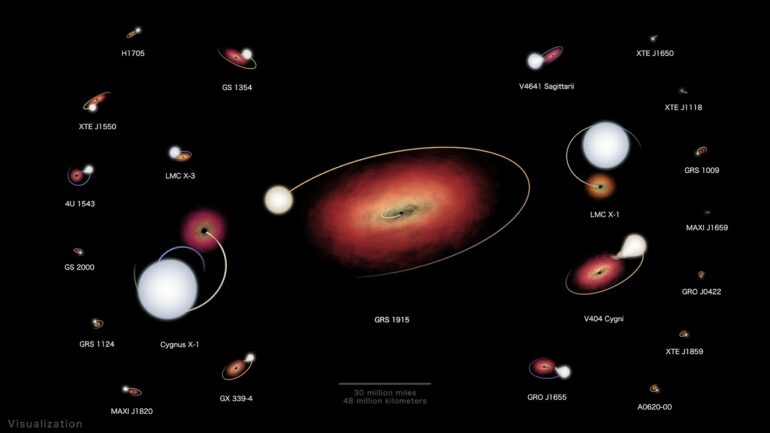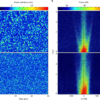Nearby black holes and their stellar companions form an astrophysical rogues’ gallery in this new NASA visualization.
Stars born with more than about 20 times the sun’s mass end their lives as black holes. As the name implies, black holes don’t glow on their own because nothing can escape them, not even light. Until 2015, when astronomers first detected merging black holes through the space-time ripples called gravitational waves, the main way to find these ebony enigmas was to search for them in binary systems where they interacted with companion stars. And the best way to do that was to look in X-rays.
This visualization shows 22 X-ray binaries in our Milky Way galaxy and its nearest neighbor, the Large Magellanic Cloud, that host confirmed stellar-mass black holes. The systems appear at the same physical scale, demonstrating their diversity. Their orbital motion is sped up by nearly 22,000 times, and the viewing angles replicate how we see them from Earth.
When paired with a star, a black hole can collect matter in two ways. In many cases, a stream of gas can flow directly from the star to the black hole. In others, such as the first confirmed black hole system, Cygnus X-1, the star produces a dense outflow called a stellar wind, some of which the black hole’s intense gravity gathers up. So far, there’s no clear consensus on which mode is used by GRS 1915, the big system at the center of the visualization.
As it arrives at the black hole, the gas goes into orbit and forms a broad, flattened structure called an accretion disk. GRS 1915’s accretion disk may extend more than 50 million miles (80 million kilometers), greater than the distance separating Mercury from the sun. Gas in the disk heats up as it slowly spirals inward, glowing in visible, ultraviolet, and finally X-ray light.
The star colors range from blue-white to reddish, representing temperatures from five times hotter to 45% cooler than our sun. Because the accretion disks reach even higher temperatures, they use a different color scheme.
While the black holes are shown on a scale reflecting their masses, all are depicted much larger than in reality. Cygnus X-1’s black hole weighs about 21 times more than the sun, but its surface—called its event horizon—spans only about 77 miles (124 kilometers). The oversized spheres also cover up visible distortions that would be produced by the black holes’ gravitational effects.
Provided by
NASA’s Goddard Space Flight Center
Citation:
NASA visualization rounds up the best-known black hole systems (2022, May 3)



